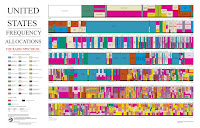Ever since I founded the Free State Foundation in 2006, I
have distributed special holiday messages on Memorial Day, Independence Day,
and Thanksgiving. Upon re-reading last year's Thanksgiving message, I realized
it captures what I would want to say now, and perhaps on future Thanksgivings
too. So, without alteration, it's reproduced immediately below.
* *
*
To me, Independence Day, Memorial Day, and Thanksgiving are uniquely
American holidays, bound together in uniquely American ways. By this I
don't mean to say that other nations don't celebrate holidays that perhaps have
the same names. And I don't mean to say that those nation's holidays don't
commemorate aspects of their own histories and traditions that, in some
respects, may be like our own.
What I do mean to say is that we celebrate Independence Day,
Memorial Day, and Thanksgiving – and understand, or should understand,
what they signify as national holidays – in our uniquely American context.
It is not necessary to accept, literally, the grade-school
version of the first Thanksgiving in 1621 – which took place within a year of
the Mayflower's landing at Plymouth Rock – to draw inspiration from the story
of the Pilgrims' pause to give thanks. Regardless of the exact circumstances –
and it now appears that the term "Thanksgiving" was not used at that
meal – their prospects in their new American home remained highly uncertain.
Last year I wrote about the 400th anniversary of
the Mayflower Compact, and I won't repeat all of that here. The key point is
that the Compact, a declaration of self-government entered into by mutual
consent, is an often-overlooked foundational American document. Those Pilgrims signing
agreed to join together to form a "civil body politic" subject to
"just and equal" laws. Not merely any laws.
In much the same way you don't have to accept, literally, the
grade-school origin story of Thanksgiving to draw inspiration from the holiday
today, you don't need to ignore the ugly history of slavery and Jim Crow in
America to draw inspiration from the true meaning of the words of the
Declaration of Independence. The Declaration's proclamation that "all Men
are created equal, that they are endowed by their Creator with certain
unalienable Rights, that among these are Life, Liberty, and the Pursuit of
Happiness," might not mean as much absent the Mayflower Compact's
covenant, a century and half earlier, to establish a civil society subject to
"just and equal laws." In other words, a line can be drawn from a proper understanding
of the Mayflower Compact to a proper understanding of the Declaration of
Independence, a thread in the establishment of the rule of law in America that
ought to bind us together.
In the same way that the men who drafted the Mayflower Compact and
the Declaration of Independence were not without their flaws, our leaders who
have sent men and women to fight America's wars are not without theirs. Thus,
some of America's wars may be viewed as more justified, or just, than others.
But we celebrate Memorial Day not to honor our wars but to honor Americans who
paid the ultimate price in answering their country's call.
Here then is the sense that I consider Thanksgiving, Independence
Day, and Memorial Day together. The Founders, concededly not perfect men,
possessed sufficient wisdom to bequeath a Constitution that framed a government
that enables us to engage in the continuing project of forming "a more
perfect Union.” Without the sacrifices of those we honor on Memorial Day, or
the wisdom of those who drafted the Declaration in 1776 or the Mayflower
Compact in 1620, the American experiment in self-government, under the rule of
law, would not exist as we know it.
To my mind, it doesn't bode well for our country's future
when so many today relish invoking the black marks in our history as a reason
to ignore, or even obliterate, the good from which we can and should rightly
draw inspiration. It bodes ill when so many relish silencing –
"cancelling" in today's lingo – fellow Americans for uttering
thoughts which with they disagree or consider out of fashion. This is not
principally a matter of whether the First Amendment protects the right of
individuals or private entities to engage in such silencing – it mostly does –
but rather a matter of whether doing so comports with the constitutional
culture that the free speech clause of the First Amendment is intended to
nurture.
On this Thanksgiving, aside from enjoying a traditional
Thanksgiving dinner with all the fixings, I'm going to draw inspiration from
what I consider to be the uniquely American links between Thanksgiving,
Independence Day, and Memorial Day. I remain unabashed in my belief that
America is a unique nation, blessed with a unique form of government, one
preserved by those who have paid the ultimate sacrifice in blood in defending
our freedoms. Any inspiration that may be drawn from these three uniquely
American national holidays ought to be in the service of a renewed commitment
to engage, as informed citizens, in the preservation of the rule of law.
With that in mind, as always, I wish you a Happy
Thanksgiving, and perhaps even one that is inspiring too!
With best wishes,
PS: #GivingTuesday is November 29. If you are able to make
a contribution to support our free market, pro-property rights, rule of
law-oriented work, we would be grateful. Please donate here.










%20Image-2.jpg)





